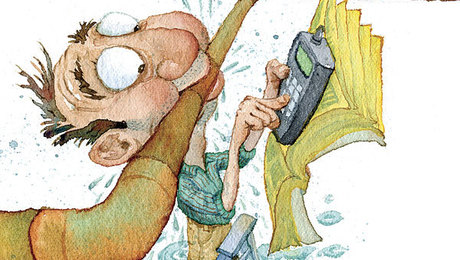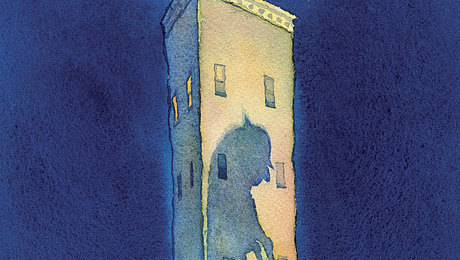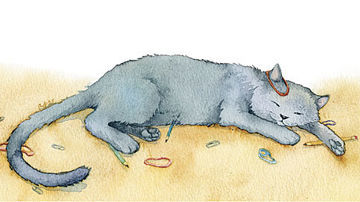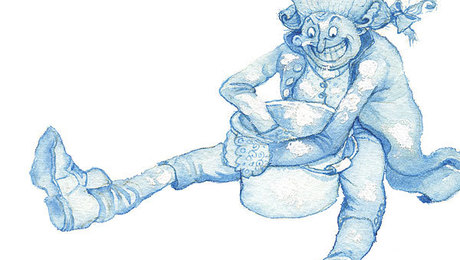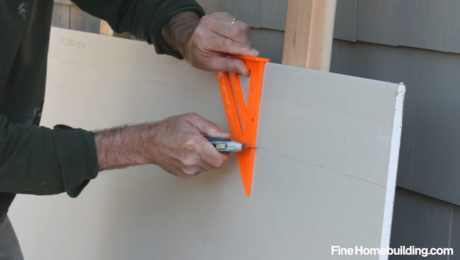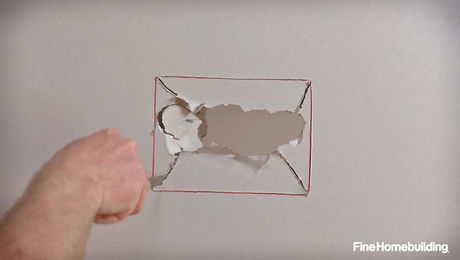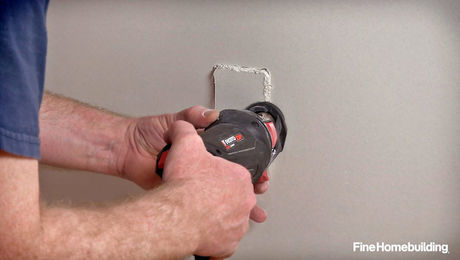The Builder’s Hand
Great moments in building history: A hundred-year-old handprint immortalized in a plaster wall
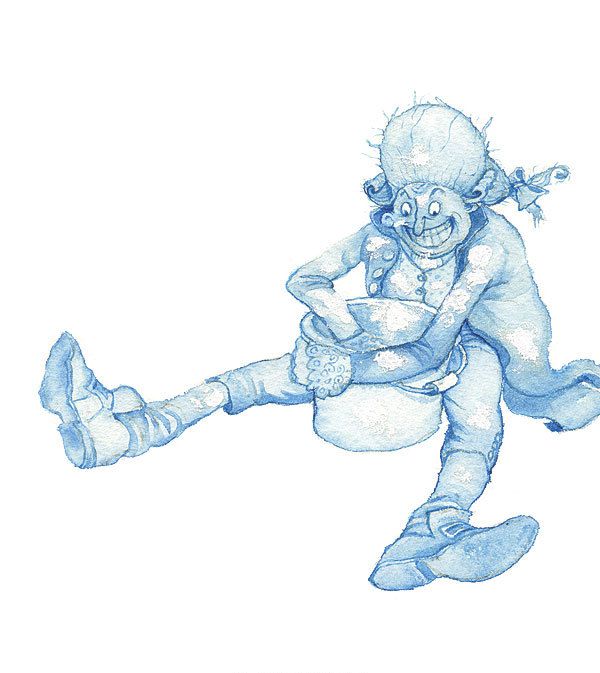
The old farmhouse had been built sometime in the 1870s. By the time I came along, the house was surrounded by subdivisions. Fortunately, it hadn’t changed much in the past 125 years. The original doors were still there, as were the oak trim, the maple floors, and the brass doorknobs. While the house had accumulated an unfortunate collection of Masonite paneling and white paint, even worse was the wallpaper, alive with “modern” colors, flocked and vinyl-coated. It had to come off. I joked that the farmer’s wife was going to come back and haunt me someday because I had called her wallpaper “god-awful hideous.”
As the Dumpster out front began to fill, the worst job of all was peeling off the wallpaper. All 14 layers. Inch by inch, speck by speck. The work was maddening. Finally, the last of it had been peeled away, and the original horsehair plaster was revealed. It was terrible. Rough, uneven, pocked. Then again, that’s what wallpaper is for—to cover imperfections. I skim-coated the dining room, filling the dents, feathering the edges, and slowly smoothing and restoring the age-old surface.
At one point, I was standing on a ladder and laying on another thin coat of Spackle. When I finished, I climbed down and mixed another batch. When I turned around, I was surprised to see a handprint on the wall where I’d been working. A human hand, splayed out in the wet plaster. I must have touched the wall as I came down and left an imprint. But my hand was dry. And the palm was smaller, the fingers too long. It wasn’t my handprint.
Whose was it? No one was working with me. I was alone. So where had it come from? The handprint hadn’t been there a few moments ago; I would have noticed it because I had just passed over that very spot. Yet there it was: a handprint where no handprint should be. Suddenly, I remembered every ghost story I’d ever heard. I shivered, and the hairs on my neck stood straight up. Could I have nudged loose a spirit? Not unheard of in old houses. But there were no “cold spots.” No moaning or phantom footsteps. Maybe there was a cold spot on the other side of the wall? Nope.
I took a flashlight and checked the wall for other indentations or marks, but there weren’t any. There was no discoloration of the Spackle, and it wasn’t an indentation of some kind; the wall was perfectly smooth. Thank goodness it wasn’t moving—or bleeding. I stared at it. What was this? The Twilight Zone?
After 10 or 15 minutes, it became more of a problem than a threat. What would my real-estate agent say? How would a buyer react to a centuries-old handprint? Maybe it was an old stain—a grease spot of some sort, hidden under the wallpaper these many years. If I painted over it, would it bleed through?
As the minutes ticked by, slowly and gradually, the handprint faded. Edges first, then the fingers, finally the palm. Summoning up my courage, I stuck my finger in it, right in the middle. I came up with wet Spackle. No blood. No screams. I wasn’t sucked into the vampire universe of the unholy dead.
Now I was really curious. The wall had been crudely built in the 1870s. That meant it was all handwork (no pun intended). And the person who’d done it must have used a ladder and a trowel, just as I had. If he’d happened to have lost his balance, he would have caught himself by reaching out his hand and pressing it against the newly plastered wall. And if he’d been falling, he would have slapped his hand in pretty hard, which would have left an imprint in the new surface a fraction of an inch deeper than the rest of the wall. If he had noticed, he could have replastered and smoothed out the indentation. But why would he? He was going to paper over it anyway.
So the builder left it, a handprint molded into plaster and then covered up for more than a century until I came along and started working. A real maker’s mark and a little bit of builder’s history.
As I skim-coated the wall, my fresh Spackle went on wet and thus was slightly dark in color. Most of the wall, covered by only a millimeter or so, dried quickly to a dazzling white. The handprint however, was 1/16 in. or 1/8 in. deeper than the rest of the surface. When filled with new Spackle, it would have been thicker and thus stayed wetter longer. I was seeing the ghostly contrast of the darker, wetter Spackle with the drier, whiter Spackle. As it dried, the edges of the imprint dried first, then the fingers, and finally the palm, slowly taking on the same color as the rest of the wall, finally disappearing forever.
